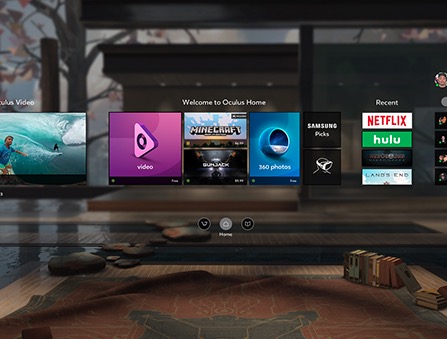360 Video: Virtual Reality’s Path to the Mainstream

Immersive and interactive games tend to get top billing at this stage of the virtual reality market’s evolution, but 360-degree video could be the category that unleashes VR to the masses.
Video sets a “baseline of usage” that establishes a gateway of discovery for VR consumers, offering a path to games and other immersive apps and experiences provided by the platform, said Nick DiCarlo, VP of immersive products and virtual reality at Samsung Electronics America.
“No matter what kind of game or other content you’re interested in, you watch video,” said Di- Carlo, who will be the opening keynote speaker at NewBay Media’s Virtual Reality 20/20 event at the TimesCenter in New York on Oct. 17.
Samsung is approaching its first full year with a commercially available VR product—the Gear VR, an Oculus-powered headset that connects to compatible smartphones and a curated ecosystem of apps and services.
“Video, we thought, was going to be really important for VR,” DiCarlo said of Samsung’s opinion as it analyzed how the market might evolve following the launch of its “Innovator” edition of Gear VR in November 2014, followed by the consumer version about a year later. “We believed in 360-degree video as a way to help VR become really mainstream.”
Inspired by the television model, Samsung’s ambition early on was to release one new VR video a day. It turns out that the company’s goals underestimated its ambitions.
“We thought that VR needed…something new every day,” DiCarlo said. “By the end of 2015, we were releasing five videos a day.”
Broadcasting & Cable Newsletter
The smarter way to stay on top of broadcasting and cable industry. Sign up below
The growing reach of specialized 360- degree cameras and stitching software keeps filling the VR pipeline. And YouTube and Facebook have fully embraced 360 video.
“The creation and release of 360 video has absolutely blown away our expectations for how rich and creative and capable of an ecosystem that was out there,” DiCarlo said.
The numbers also bear out video’s popularity: Though it’s still early days, only about 40% of the apps available for Gear VR are games.
That’s surprising, DiCarlo said, because all of the early talk about VR content centered on games, with 360 video seen as a smaller complement. It turns out that 360 video is a “little bit bigger” than games on Gear VR.
“If you love games, you also watch video. But if you watch video you don’t necessarily love games,” Di- Carlo said, noting that other categories such as social VR (AltspaceVR, for example) and VR real estate and entertainment systems from companies like Matterport will also factor heavily into the direction of the market.
Likewise, the broader VR ecosystem—from the headsets and smartphones that power them, to the apps to the content contained in those apps—has evolved rapidly.
“All of these things need to happen all at once before you can sell one unit,” DiCarlo said. “What’s happened in the last year is nothing short of extraordinary.”
“Millions” of hours of VR video have been consumed on Gear VR, DiCarlo said. The platform recently hit 1 million active monthly users. “It has started to hit some big, key milestones.”
Samsung has been helped in hitting those numbers by a promotion which gave free Gear VR headsets to customers who pre-ordered the company’s new Galaxy S7 and S7 Edge smartphones.
That promotion “exceeded our expectations,” DiCarlo said. “It took a lot of people by surprise how effective that was.”
Of course, Gear VR is far from alone in an increasingly competitive market. While PC-connected platforms such as the Oculus Rift and the HTC Vive target the highest end of VR’s consumer category, the mobile sector of the market, where Samsung lives today, already contends with relatively cheap Cardboard viewers. Google’s Android-powered Daydream system is also expected to debut later this year.
